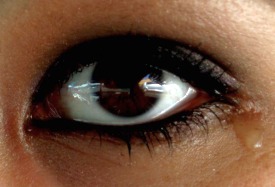|
Confused about Complex Migraine?Quite often the term complex migraine can be confusing for patients. Lately it has been used in various different ways. Our task today is to briefly weed through the definitions of complex migraine, so you can find the diagnosis and treatment that applies to you. Defining terms - which one is you?
Complex migraine syndrome (or complicated migraine) is not a name commonly used for specific migraine disorders today. So what do doctors mean by the term? 1) Migraine types that can mimic stroke. One of the most common uses of the term is for types of migraine, or specific migraine attacks, that mimic stroke. In this case, the term could refer to a number of different types of migraine. In fact, many migraine attacks may include dizziness, confusion, trouble speaking (aphasia), and headache - common stroke symptoms. Even typical aura with migraine headache can include numbness, as can migraine aura without headache. There are certain types of migraine that may mimic stroke symptoms even more closely - such as hemiplegic migraine and basilar-type migraine. Most of these migraine types are explained below. You can see complex migraine being described like this in this news story. 2) Migraine with aura. Sometimes the term is used to refer to migraine with aura, including migraine that includes a headache or does not. This type of migraine has an aura - various types of neurological symptoms. This may include trouble speaking, pins and needles, seeing flickering lights or zig zags, or losing vision. This is a fairly common type of migraine, though it's more common to have migraine without aura. 3) Hemiplegic Migraine. There are two types of hemiplegic migraine, and even more sub-types. There's familial hemiplegic migraine, and sporadic hemiplegic migraine. This type of migraine is characterized by motor weakness, with other symptoms such as numbness, visual aura, and headache. Click the links for more information. 4) Basilar-type Migraine. Previously called basilar migraine or basilar artery migraine, this rare type doesn't include motor weakness, but various other strange symptoms which may include vertigo, decreased levels of consciousness, ringing in the ears, and visual disturbances. Click the link for more info. 5) Ongoing neurological symptoms. Finally, complex migraine or complex migraine syndrome may refer not to a specific type of migraine, but migraine neurological symptoms that continue for an unusual amount of time. For example, you may have migraine disease with migraine attacks, but you continue to see visual auras (ie flashing lights) for several weeks, or permanently. Actually, sometimes the term complex migraine is used to refer to any migraine with neurological symptoms. However, since those types are generally covered by the types above, I didn't list them separately. You can see this use of the term here. Dr. Gary Jay discusses the use of the term from his perspective in Assessing and Treating Complex Migraine. The article is useful, though I would suggest we should be careful about defining our own terms for migraine types. Now what?I hope you've been able to narrow down what type of migraine you have. That's really your first step toward proper treatment.Generally speaking, many of the migraine treatments you'll read about on this site are used for the migraine types above. However, there are, for example, some treatments that are avoided with certain types of migraine. And there are some types of treatment that seem to be more likely to work in certain types of migraine. For example, verapamil is a common preventative treatment for familial hemiplegic migraine. This is why it's so important to get a diagnosis more specific than "complex migraines". The other challenge is that the symptoms listed above could indeed be signs of another disease. It's very important to see a doctor - better yet, a neurologist who specializes in migraine treatments - whenever you have new symptoms, or symptoms that change or become worse. To start learning about the many options available to you, read How to treat a migraine. |
